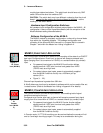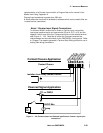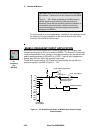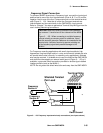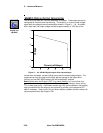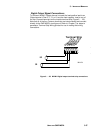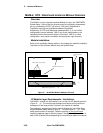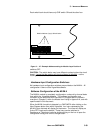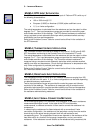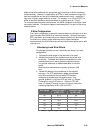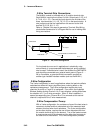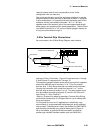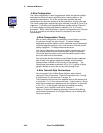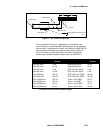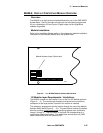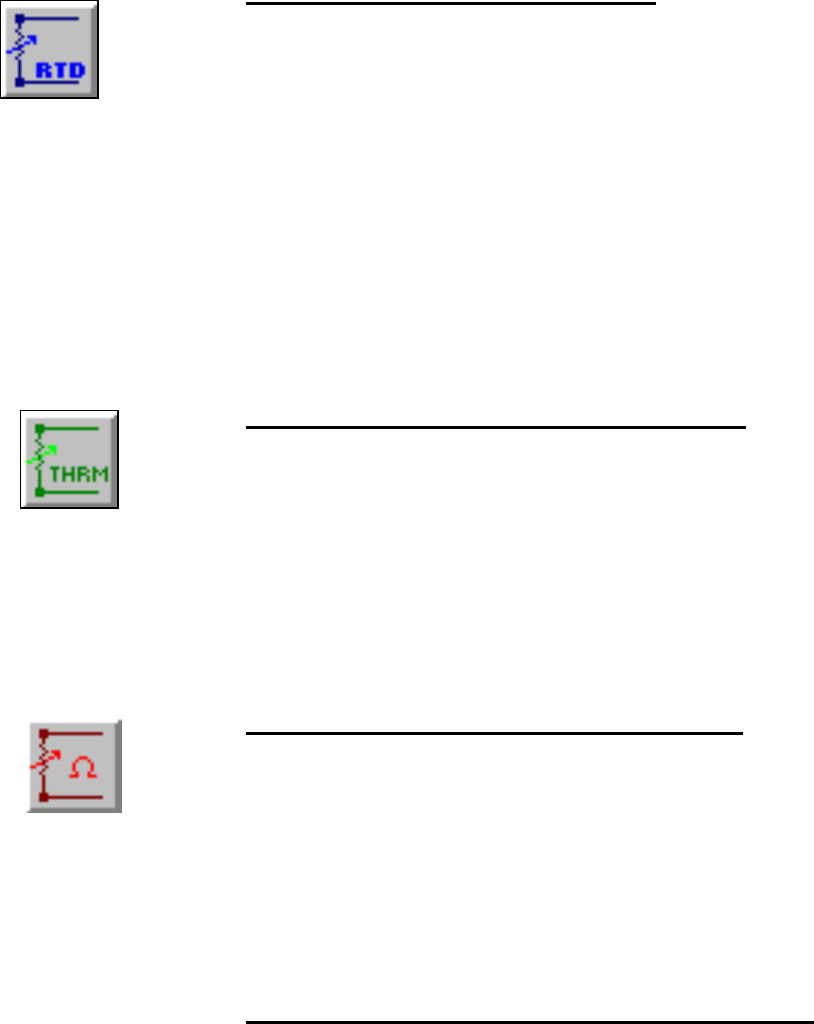
3... INTERFACE MODULES
USING THE OMP-MODL3-40
MLIM-4; RTD INPUT APPLICATION
The RTD function of the MLIM-4 allows for the input of Platinum RTD’s with any of
the following characteristics:
♦ 100 or 1000 ohm @ 0’ C
♦ European (0.0385) or American (0.0392) alpha coefficient curve
♦ 2, 3, or 4-wire configuration
The actual temperature is calculated from the resistance and can be output in either
degrees C or F. Two input temperature ranges are provided for maximizing span
and ultimate resolution of the readings. The RTD element resistance is measured
using a constant current ratiometric technique which provides excellent accuracy
and stability over time and temperature.
Refer to the Excitation Current Table for current levels utilized in the excitation of
the RTD elements.
MLIM-4; THERMISTOR INPUT APPLICATION
The Thermistor function of the MLIM-4 allows for the input of 10,000 ohm @ 25C
NTC thermistors conforming to the Fenwall Curve 16 or equivalent RT curve.
The actual temperature is calculated from the resistance and can be output in either
degrees C or F. Four input temperature ranges are provided for maximizing span
and ultimate resolution of the readings. The Thermistor element resistance is
measured using a constant current ratiometric technique which provides excellent
stability over time and temperature. Due to the high resistance vs temperature ratio,
only 2-wire configuration is provided (and required).
Refer to the Excitation Current Table for current levels utilized in the excitation of
the Thermistor element under test.
MLIM-4; RESISTANCE INPUT APPLICATION
The Resistance function of the MLIM-4 can measure resistances ranging from 200
ohm to 400,000 ohm full scale. 2, 3, or 4-wire configurations can be used depending
on absolute accuracy requirements.
Twelve input resistance ranges are provided for maximizing span and ultimate
resolution of the readings. The resistance is measured using a constant current
ratiometric technique which provides excellent stability over time and temperature.
Refer to the Excitation Current Table for current levels utilized in the excitation of
the resistance elements being measured.
MLIM-4; INPUT SIGNAL CONNECTION METHODS:
For all three signal types, RTD, thermistor, and resistance, a ratiometric resistance
measurement technique is used. In the case of the RTD and thermistor
measurements, a software conversion is then used to convert this resistance into
temperature.
In measuring the resistance of a distant element with a conventional 2-wire
connection configuration, the resistance of the lead wires running from the module
terminal strip to the actual sensing element itself will add resistance and
corresponding error. The magnitude of these errors depends on the resistance of the
lead wires which is a function of wire gauge, temperature, and any connection
resistance. If the resistance is small relative to the resistance being measured, this
RTD Input
Thermistor
Input
Resistance
Input



